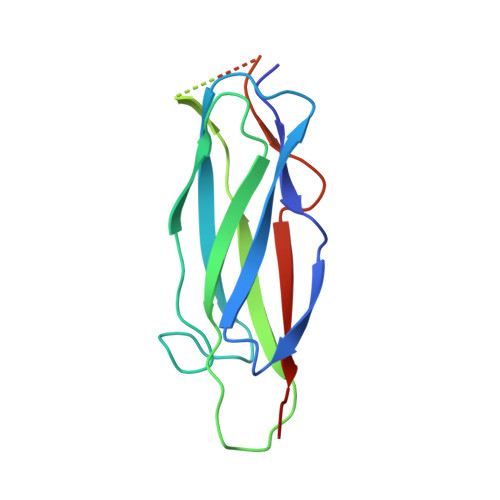The second Ca2+-binding domain of the Na+ Ca2+ exchanger is essential for regulation: crystal structures and mutational analysis
Mercado Besserer, G., Ottolia, M., Nicoll, D.A., Chaptal, V., Cascio, D., Philipson, K.D., Abramson, J.(2007) Proc Natl Acad Sci U S A 104: 18467-18472
- PubMed: 17962412
- DOI: https://doi.org/10.1073/pnas.0707417104
- Primary Citation of Related Structures:
2QVK, 2QVM - PubMed Abstract:
The Na(+)-Ca(2+) exchanger plays a central role in cardiac contractility by maintaining Ca(2+) homeostasis. Two Ca(2+)-binding domains, CBD1 and CBD2, located in a large intracellular loop, regulate activity of the exchanger. Ca(2+) binding to these regulatory domains activates the transport of Ca(2+) across the plasma membrane. Previously, we solved the structure of CBD1, revealing four Ca(2+) ions arranged in a tight planar cluster. Here, we present structures of CBD2 in the Ca(2+)-bound (1.7-A resolution) and -free (1.4-A resolution) conformations. Like CBD1, CBD2 has a classical Ig fold but coordinates only two Ca(2+) ions in primary and secondary Ca(2+) sites. In the absence of Ca(2+), Lys(585) stabilizes the structure by coordinating two acidic residues (Asp(552) and Glu(648)), one from each of the Ca(2+)-binding sites, and prevents a substantial protein unfolding. We have mutated all of the acidic residues that coordinate the Ca(2+) ions and have examined the effects of these mutations on regulation of exchange activity. Three mutations (E516L, D578V, and E648L) at the primary Ca(2+) site completely remove Ca(2+) regulation, placing the exchanger into a constitutively active state. These are the first data defining the role of CBD2 as a regulatory domain in the Na(+)-Ca(2+) exchanger.
- Department of Physiology, Cardiovascular Research Laboratories, and U.S. Department of Energy Institute for Genomics and Proteomics, University of California, Los Angeles, CA 90095, USA.
Organizational Affiliation:

















